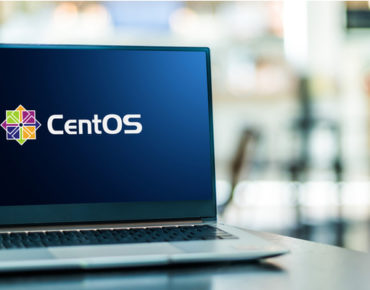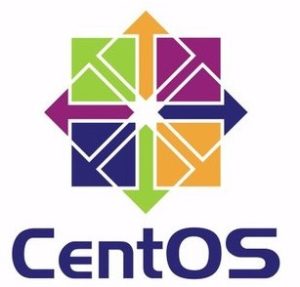As CentOS Linux Loses Support Dec. 31, CloudLinux TuxCare Moves In to Help CentOS Users

With official support for a stable CentOS 8 Linux operating system set to end Dec. 31 from Red Hat, dedicated, long-time enterprise users of the OS have been scrambling to determine what to do to keep their critical IT infrastructures up and running safely after the deadline passes.
For enterprise users that are not yet ready to switch operating systems by then, CentOS alternative CloudLinux recently offered an answer to the conundrum – the company is now offering paid professional support to CentOS 8 users to take up the slack and keep their OS requirements on track.
Those extended updates and support for CentOS 8 users will be available through Dec. 31, 2025, via CloudLinux TuxCare Extended Lifecycle Services, which is a division of CloudLinux. The new support services include 24/7 support and updates for system components on Linux operating systems that are no longer supported by their original vendors. The new CentOS 8 support will be provided along with existing extended support for Ubuntu 16.04, CentOS 6 and Oracle 6 users, according to the company.
This gives CentOS users more time to figure their plans and potentially transition to one of several CentOS replacement operating systems for their enterprise workloads.  Those users could of course transition to another OS before this year’s Dec. 31 deadline set by Red Hat, but for many companies that would be a hardship and difficult to do in a short time span. The extended support from CloudLinux provides a lifeline for many business customers.
Those users could of course transition to another OS before this year’s Dec. 31 deadline set by Red Hat, but for many companies that would be a hardship and difficult to do in a short time span. The extended support from CloudLinux provides a lifeline for many business customers.
Red Hat caused quite a stir in the CentOS user community in December 2020 when it announced that it would no longer offer the open source CentOS Linux OS as a stable release and would instead only provide it as a rolling release with frequent changes under the name CentOS Stream. For enterprises using CentOS 8, this was a huge dilemma because they needed a stable update and support schedule for their production work. By transitioning CentOS into CentOS Stream, Red Hat will be transforming it into a rolling release with frequent updates that essentially turn it into a beta OS that is no longer suitable for reliable production workloads.
Previously, the latest CentOS 8 version had been expected to have support through 2029.
Founded in 2004, CentOS – which stands for Community Enterprise Linux Operating System – was based on Red Hat Linux 2.1 code before Red Hat Linux evolved and was aimed directly at businesses and became RHEL.
When Red Hat announced the coming changes back in December it said the move to CentOS Stream “represents the best way to further drive Linux innovation,” while giving open source developers, hardware and software creators, individual contributors and systems administrators “a closer connection to the development of the world’s leading enterprise Linux platform.”
But instead of understanding from dedicated CentOS users, loud complaints and concerns quickly emanated from the user community, which within weeks inspired several open source community groups to begin planning alternatives that users would be able to pick up and use to transition from the now-doomed CentOS 8 stable release.
Among the CentOS alternatives to sprout up was a project that was originally code-named Lenix from CloudLinux, which offers a paid Red Hat Enterprise Linux 8 (RHEL 8)/CentOS clone that is built for hosting providers.
By mid-January, the Lenix project was renamed and given a focused direction, turning it into AlmaLinux, a 1:1 binary compatible fork of RHEL that is CentOS compatible, free to use and built on open source, just like CentOS. The first code for the project started as a RHEL fork in December and it was released as a first official AlmaLinux version on March 30, a week after Red Hat released its stable version of RHEL 8.
In August, AlmaLinux was made available in the Microsoft Azure Marketplace, giving it more credibility with CentOS Linux users who must have a new plan for their OS futures by Dec. 31. AlmaLinux OS is a 100 percent, community-owned and governed, open source and forever-free, enterprise-grade Linux distribution based on RHEL. It is 1:1 binary compatible with RHEL so users can switch to it relatively easily in the future when they want to make the move, the company said.
Other CentOS alternatives include Rocky Linux, which arrived in June. The Rocky Linux development effort – named as a tribute to late CentOS co-founder Rocky McGaugh – was started by Gregory M. Kurtzer, the co-creator of the original CentOS distro, and the inventor of Singularity and Warewulf.
Several IT analysts told EnterpriseAI that the CloudLinux move to offer extended professional support to allow CentOS 8 users to stay with their choice of OS is a benefit for existing users.
“Building, packaging and supporting Linux distributions – one’s own and others’ – is one of the most mature and time-proven open source business models in existence,” said Bill Weinberg, open source strategist with Open Source Sense. “Indeed, this model was the original growth engine for Red Hat and the impetus for creating work-alike CentOS and comparable distros.”
Historically, the distro creation and support business has been fragmented and faced predictable scaling challenges from both structural and market size issues, said Weinberg. “But the profitability, ubiquitousness and commercial terms of RHEL, together with need for massive scaling of cloud-based application deployment, created the environment for CentOS’s success,” he added. “When Red Hat attempted to limit the utility of CentOS, first by subsuming the distro and then by changing its release cycle, the open source behemoth actually enhanced the value of RHEL workalikes, creating an opportunity for CloudLinux and [others].”
The Tux support, however, does create some questions for users, including how quickly and directly CloudLinux can propagate bug fixes and patches upstream, he said.
Another analyst, Rob Enderle, principal of Enderle Group, said that the CloudLinux Tux support services will serve an important community need.
“Being abandoned without any support is a platform killer, so any support offered with be appreciated by users,” said Enderle.
Asked if CentOS users can now relax about the future of the OS, Enderle said they should still be cautious.
“It will undoubtedly help, but the determination of adequacy will depend on the use case, the capability of the support organizations, and the long-term economics surrounding this effort,” he said. “The long-term economics may not make sense making this a stop-gap measure, but we will likely have a better feel after Red Hat pulls support and this is the only support that remains.”












